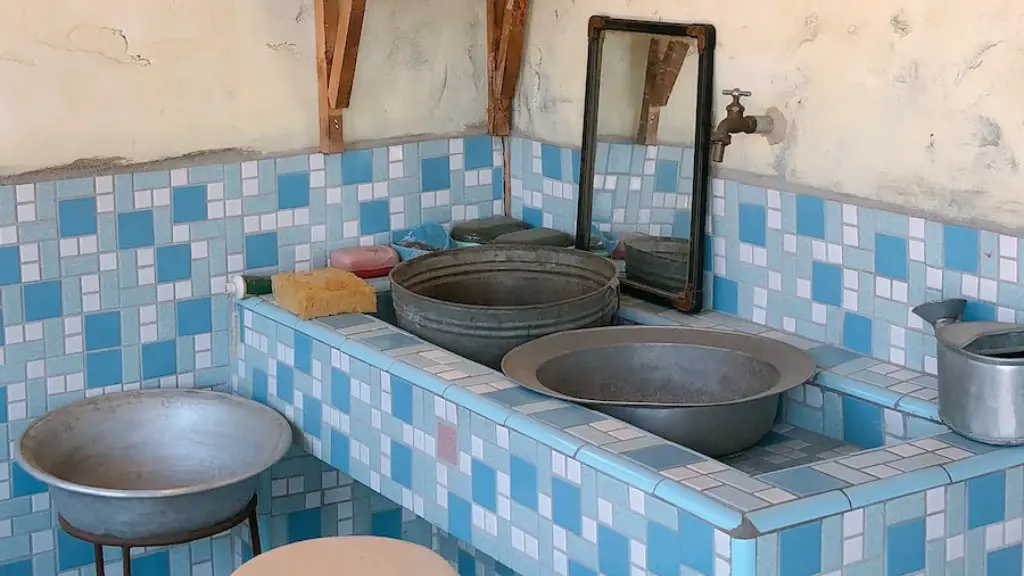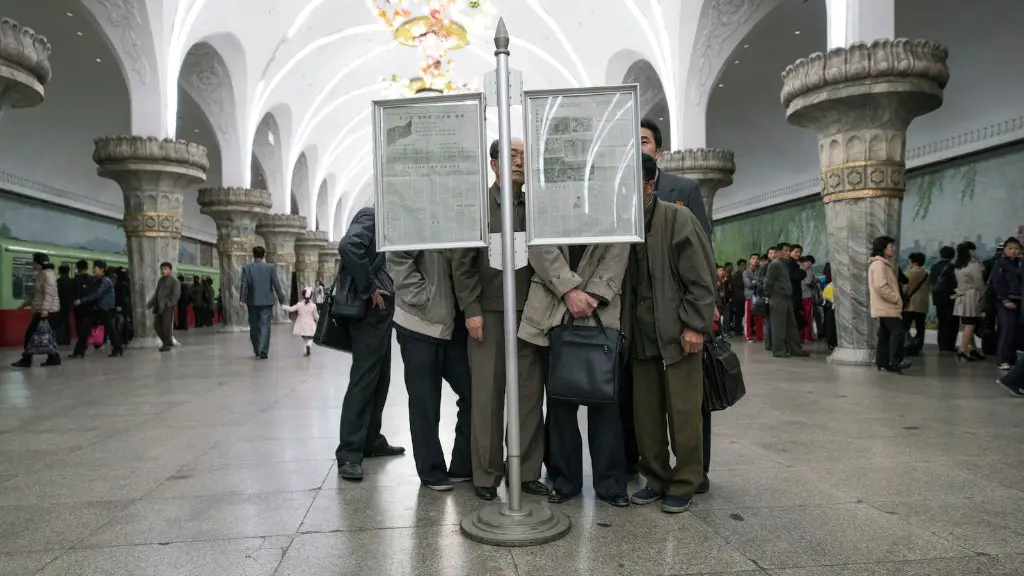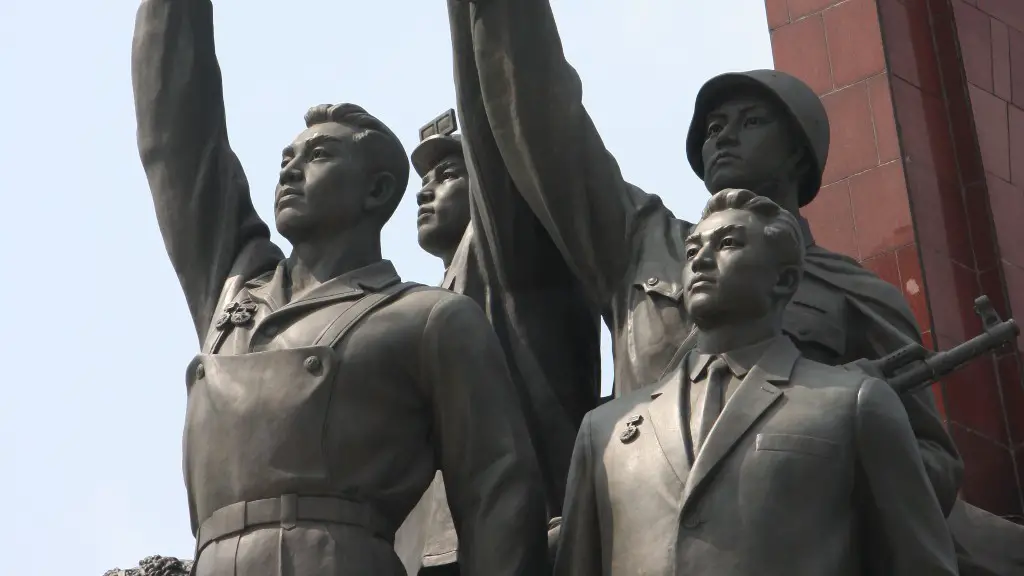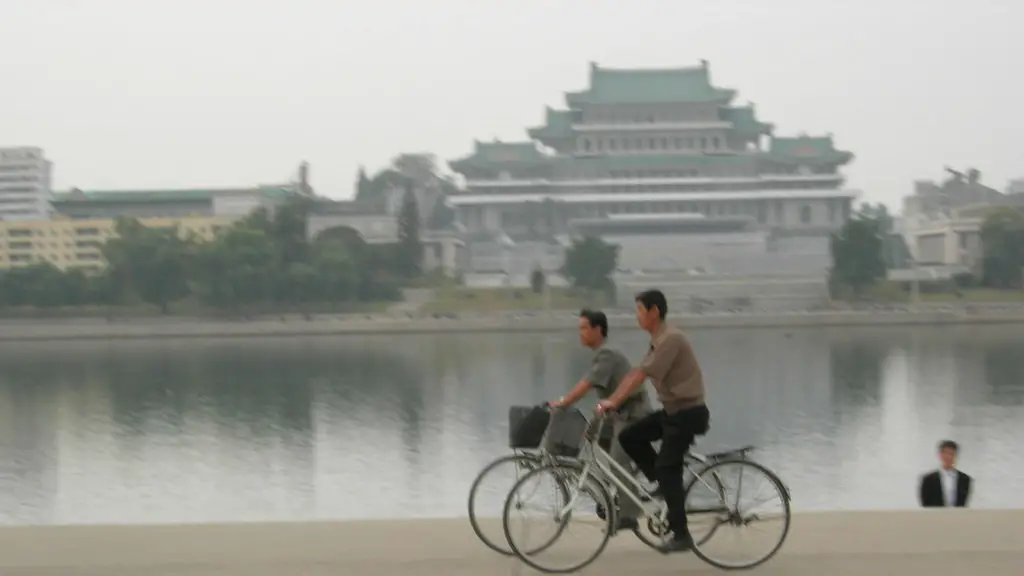Since the 1950s, North Korea has made significant advances in its nuclear capabilities. In 2003, North Korea announced its withdrawal from the Nuclear Non-Proliferation Treaty. Since then, it is estimated that North Korea has produced enough nuclear material for at least a dozen weapons. In 2006, North Korea conducted its first nuclear test. Since then, it is believed to have conducted four more nuclear tests.
The roots of North Korea’s nuclear program go back to the 1950s. After the Korean War, the Soviet Union provided North Korea with nuclear technology and assistance. In the 1960s, North Korea began construction of its first nuclear reactor. In the 1970s, North Korea signed the Nuclear Non-Proliferation Treaty and agreed to international inspections. However, North Korea later claimed that these inspections violated its sovereignty.
In the 1990s, North Korea was accused of secretly developing a nuclear weapons program. In 1994, North Korea and the United States signed an agreement in which North Korea agreed to halt its nuclear program in exchange for economic assistance. However, it is believed that North Korea never fully complied with the agreement.
In 2002, North Korea admitted to having a secret nuclear weapons program. This led to the collapse of the 1994 agreement.
North Korea’s nuclear weapons program dates back to the 1950s, when the country first began exploring nuclear technology. In the early 1980s, North Korea began construction of a nuclear reactor, which was completed in 1986. In the following years, North Korea conducted several nuclear tests, culminating in the country’s first successful test of a nuclear weapon in 2006. Since then, North Korea has conducted additional nuclear tests, and is believed to have a small stockpile of nuclear weapons.
How did North Korea obtain nuclear weapons?
It is alleged that Pakistan’s former top scientist, Abdul Qadeer Khan, supplied key data on uranium enrichment and information to North Korea in exchange for missile technology around 1990-1996, at the behest of Prime Minister Benazir Bhutto. US intelligence officials believe that this exchange played a significant role in North Korea’s development of nuclear weapons. If true, this would represent a grave breach of international non-proliferation agreements by Pakistan. The Pakistani government has denied these allegations.
The Hwasong-14 ballistic missile is a North Korean missile that can travel up to 4,500km. It has been tested with a range of 8,000km, but some studies suggest it could travel as far as 10,000km, making it capable of reaching New York.
How many nuclear weapons does North Korea have
North Korea has a relatively small number of nuclear warheads in comparison to other nuclear-armed states. However, the exact number is unknown and estimates range from 40 to 50 warheads. Some experts believe that North Korea could have up to 116 nuclear warheads, but this is still unconfirmed. Despite the small number of nuclear weapons, North Korea poses a significant threat due to its volatile and unpredictable nature.
In the 1960s, the Soviet Union transferred nuclear technology and hardware to North Korea to allow Pyongyang to develop a nuclear energy program. This was done when North Korea was a close ally to the Soviet Union.
How did China get nukes?
The China-Soviet Union secret agreement of 1951 was a game-changer for China’s nuclear ambitions. With Soviet assistance, China was able to develop its own nuclear weapons in the late 1950s. This was a major achievement for China, and it has allowed them to remain a major player on the world stage ever since.
There is a possibility that Russian missiles could reach the US. The Union of Concerned Scientists believes that Russian land-based missiles could reach the US in as little as 30 minutes, with submarine-based missiles striking 10 or 15 minutes after they are launched. While this is a possibility, it is not certain if Russian missiles could actually reach the US.
Where would a nuclear bomb hit in the US?
The six most likely target cities in the US are as follows: New York, Chicago, Houston, Los Angeles, San Francisco, and Washington, DC. These countries will stay prepared to combat any type of nuclear attack shortly. The nuclear impact could destroy the city and this will lead to a disaster.
The United States Air Force is the most powerful air force in the world. It is composed of 5217 active aircraft and is the most technologically advanced and largest air force in the world. The United States Air Force is a vital part of the United States military and is responsible for protectiing the United States and its interests.
How long does it take for a nuke to reach the US
The time difference between a land-based missile and a submarine-based missile striking the United States from Russia is significant. A land-based missile would take about 30 minutes to fly between the two countries, while a submarine-based missile could strike in as little as 10 to 15 minutes. This difference is due to the fact that land-based missiles travel at a slower speed than submarine-based missiles.
Japan has made a commitment not to produce nuclear weapons, but it has the capability to do so if it decided to. Although Japan does not possess any programs for the development of weapons of mass destruction (WMD), it is the only non-nuclear weapon state in possession of a full nuclear fuel cycle and has advanced WMD-relevant industries. This means that Japan could potentially produce nuclear weapons if it decided to do so. However, Japan has instead chosen to focus on its civilian nuclear power program and use its WMD-relevant technology for peaceful purposes.
Can nukes be shot down?
It is possible to shoot down a nuclear missile, but it is extremely difficult. The most common way to try to shoot one down is with a ground-based interceptor missile, but these are only effective if the ICBM is close to the launch site and the interceptor missile is very accurate. Another way to shoot down a nuclear missile is with a surface-to-air missile, but these are only effective if the ICBM is close to the launch site and the surface-to-air missile is very accurate.
The Japanese government has long considered developing nuclear weapons, but has ultimately decided that this would make Japan less secure. Japanese opinion polls consistently express strong public opposition to nuclear weapons, as do their elected representatives.
How many miles will a nuclear bomb destroy
MIRVs (Multiple Independent Re-entry Vehicles) are a type of ballistic missile that can carry multiple warheads. The advantage of MIRVs is that they can destroy a larger area than a single bomb with the same yield. This is because each warhead can target a different area.
The Soviet atomic bomb project was one of the most secretive and successful military research and development programs in history. Authorized by Joseph Stalin in the aftermath of World War II, the project eventually led to the development of the world’s first nuclear weapons.
For nearly two decades, the Soviet Union maintained a lead in the nuclear arms race, due in large part to the success of the atomic bomb project. The project’s ultimate legacy, however, was the Cold War, a decades-long conflict between the Soviet Union and the United States that still shapes the world today.
What country has the most nukes?
Russia has the most confirmed nuclear weapons, with 5,997 nuclear warheads The United States follows behind with 5,428 nuclear weapons, hosted in the US and 5 other nations: Turkey, Italy, Belgium, Germany and the Netherlands. Russia’s nuclear arsenal is believed to be much larger than the US, with some estimates suggesting they have as many as 7,000 nuclear warheads.
In 1994, Ukraine agreed to transfer and destroy its nuclear weapons, citing its inability to circumvent Russian launch codes. This agreement led to Ukraine becoming a party to the Treaty on the Non-Proliferation of Nuclear Weapons (NPT).
Who gave Russia nuclear technology
Klaus Emil Julius Fuchs was a German theoretical physicist and atomic spy who supplied information from the American, British and Canadian Manhattan Project to the Soviet Union during and shortly after World War II. Fuchs was born in Rüsselsheim, Germany, and attended the University of Leipzig, where he studied physics. He later attended the University of Kiel and the University of Göttingen, where he earned his doctorate in physics in 1937. In the early 1940s, Fuchs worked on the British Tube Alloys project, which was the precursor to the Manhattan Project, and he later joined the Manhattan Project at the Los Alamos National Laboratory in the United States. Fuchs was arrested in 1950 and pleaded guilty to charges of espionage. He was sentenced to 14 years in prison and was later released on parole in 1959. After his release, he returned to East Germany, where he worked as a scientific consultant.
Although Canada does not have nuclear, chemical, or biological weapons, it is a member in good standing of all relevant nonproliferation treaties and regimes. This means that Canada is committed to reducing the proliferation of these weapons and to working towards their eventual elimination.
Final Words
The answer to this question is somewhat complicated. North Korea likely obtained the bulk of its nuclear technology and material from Pakistan in the late 1990s. It is also believed to have procured equipment and material from Russia, Iran, and China. North Korea is thought to have produced a small amount of highly enriched uranium (HEU) on its own, but the extent of its capabilities is unknown. It is also possible that North Korea has HEU from other sources.
There are a variety of reasons why North Korea has nuclear weapons. One reason is that nuclear weapons serve as a deterrent against a potential attack from the United States or other countries. North Korea is also aware that other countries in the region, such as South Korea and Japan, have nuclear weapons, and they feel that they need to have them as well in order to maintain a balance of power. Additionally, North Korea views nuclear weapons as a way to increase its international prestige and status.





